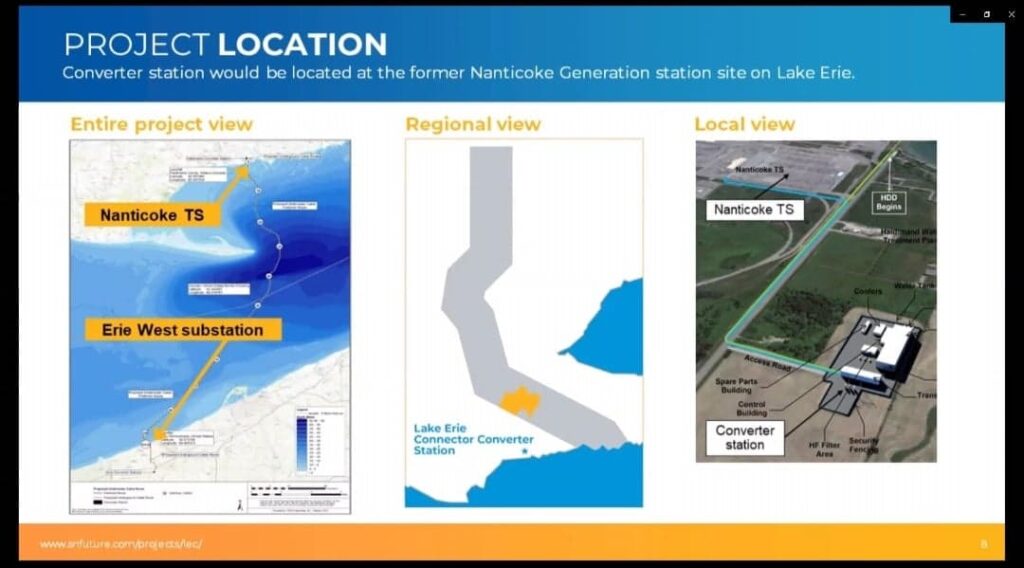
When it comes to the economic benefits Six Nations could receive from a 117-km Lake Erie Connector Project, there are two compensation offers on the table – and they can’t be renegotiated.
Since Six Nations of the Grand River Elected Council approved a preliminary term sheet last month outlining the economic benefits to Six Nations from the Lake Erie Connector (LEC) project, many community members have said the $44 million to $90 million in possible revenue from the project is not enough. Some said Six Nations should ask for more.
But during the first online community consultation session yesterday with project proponents and Six Nations of the Grand River Development Corp. reps, it was revealed that the offers cannot be re-negotiated.
Instead, SNGRDC President Matt Jamieson said, the consultation sessions – which are only going to be held online – are to determine if Six Nations wants to be a willing a participant in the project or not. The two economic offers – ownership or partnership – outlined in the term sheet are not renegotiable.
The term sheet that Six Nations of the Grand River Elected Council signed last month technically offers Six Nations three choices:
-do nothing (proponents say the project will move forward with or without Six Nations’ involvement)
-agree to a 7.5 per cent ownership stake in the project, with the potential return of $44 million over 40 years, or, up to $90 million if the project lifespan reaches over 55 years
-participation payments, which amounts to $30 million to $40 million over 40 years, or, up to $58 million if the project lifespan reaches over 55 years.
Six Nations is being offered the chance to be an economic partner in the project because it sits on 1701 Nanfan Treaty area.
When asked if Six Nations can negotiate for a larger piece of the pie, Cherie Brant, an Indigenous lawyer specializing in energy transmission, land development and financing, said the financial modelling has already been done.
“A lot of work has gone into this already,” she said. “It would be a very big challenge to go backwards,” she said, on such a short timeline.
Project proponents are hoping to finalize the deal in June, shortly after community consultation sessions wrap up at the end of April.
Six Nations has been in talks with the developer, ITC Holdings, since 2013.
The project aims to construct a bilateral transmission line that sells excess energy generated from either Canada or the United States whenever each has a surplus of power to sell.
Ontario will import electricity from stateside whenever it needs more power at a lower cost.
The term sheet is a non-binding preliminary agreement signed by SNGR Chief Mark Hill last month.
Site preparation is expected to begin next year with a four-year construction period and the transmission line is expected to be operational by 2026 or 2027.
The project will also provide job opportunities for Six Nations people during the four-year construction period.
Whichever option Six Nations chooses – ownership or participation – the revenue will be managed by the development corporation and the SNGRDC board of directors will decide annually how to disperse funds through its economic development trust.
“We’re looking to Six Nations for guidance…on the best decision in the best interest of the people in the long run,” said Jamieson.
SNGRDC has reached out to the Haudenosaunee Confederacy Chiefs Council to be part of the discussions, with a letter sent to HCCC secretary Jock Hill on Feb. 9.
“We have yet to hear back from them,” said Jamieson.






